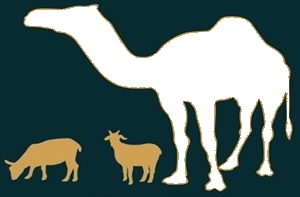Profil hormonal en périodes de rut et de non-rut chez le dromadaire (Camelus dromedarius)
Résumé
Le dromadaire est un animal à reproduction saisonnière. La saison de reproduction (également appelée «période de rut» ou «ornière») de cette espèce coïncide avec les mois d’hiver et se caractérise par des changements importants des taux circulants de plusieurs hormones. Pendant la période de rut (saison hivernale), les taux circulants de testostérone, de cortisol et d’hormones thyroïdiennes sont significativement plus élevés qu’en été, alors que les taux de vitamine D sont très faibles en hiver, par comparaison à ceux analysés durant la saison estivale. Ces changements hormonaux pourraient moduler la fonction de reproduction et l’adaptation de la thermorégulation de l’animal. La variation dans la littérature des valeurs des concentrations de la plupart de ces hormones circulantes pendant la période de rut, pourrait s’expliquer par les conditions environnementales et expérimentales dans lesquelles les études ont été réalisées. Chez le dromadaire, l’étude des fluctuations saisonnières du profil hormonal pourrait contribuer à la connaissance fondamentale de la physiologie de la reproduction de cette espèce, et sera d’une grande utilité pour les vétérinaires pour orienter leur diagnostic clinique et améliorer les potentialités de production et de reproduction de cette espèce. Les mécanismes des hormones thyroïdiennes, des glucocorticoïdes et de la vitamine D dans la modulation de la fonction de reproduction et de la fertilité chez le dromadaire restent à étudier.
Mots-clés: Testostérone, Hormones thyroïdiennes, Cortisol, Vitamine D, Saison, Dromadaire, Maroc
Téléchargements
Full-text of the article is available for this locale: English.

Téléchargements
Publié-e
Comment citer
Numéro
Rubrique
Licence

Revue Marocaine des Sciences Agronomiques et Vétérinaires est mis à disposition selon les termes de la licence Creative Commons Attribution - Pas d’Utilisation Commerciale - Partage dans les Mêmes Conditions 4.0 International.
Fondé(e) sur une œuvre à www.agrimaroc.org.
Les autorisations au-delà du champ de cette licence peuvent être obtenues à www.agrimaroc.org.

